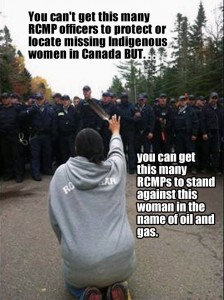The United Nations Declaration on the Rights of Indigenous Peoples (UNDRIP) was adopted by the United Nations in September 2007.
According to Wikipedia, the purpose of the declaration is to “set out the individual and collective rights of indigenous peoples, as well as their rights to culture, identity, language, employment, health, education and other issues.” It also “emphasizes the rights of indigenous peoples to maintain and strengthen their own institutions, cultures and traditions, and to pursue their development in keeping with their own needs and aspirations.” Moreover, the Declaration “prohibits discrimination against indigenous peoples”, and it “promotes their full and effective participation in all matters that concern them and their right to remain distinct and to pursue their own visions of economic and social development.”
The UNDRIP was adopted by 144 countries, and was first voted against by 4 countries, Canada and the USA (have yet to reverse their position), and New Zealand and Australia (reversed their position in 2009).
Like all UN declarations, the UNDRIP is not legally binding. However, the main purpose of the declaration is to provide standards for treating the indigenous peoples, and for eliminating the violation of their identity and their cultural rights.
The UNDRIP can be found on:
http://www.un.org/esa/socdev/unpfii/documents/DRIPS_en.pdf
 This picture is not from the article however they are about the same thing. I was impressed to see this picture make the rounds on Facebook especially since it was posted by friends who I wouldn’t have guessed would be interested. I think that the more that social media shares things about First Nations causes, the more awareness there will be. I found this article posted on Facebook as well and I think they complement each other well.
This picture is not from the article however they are about the same thing. I was impressed to see this picture make the rounds on Facebook especially since it was posted by friends who I wouldn’t have guessed would be interested. I think that the more that social media shares things about First Nations causes, the more awareness there will be. I found this article posted on Facebook as well and I think they complement each other well.